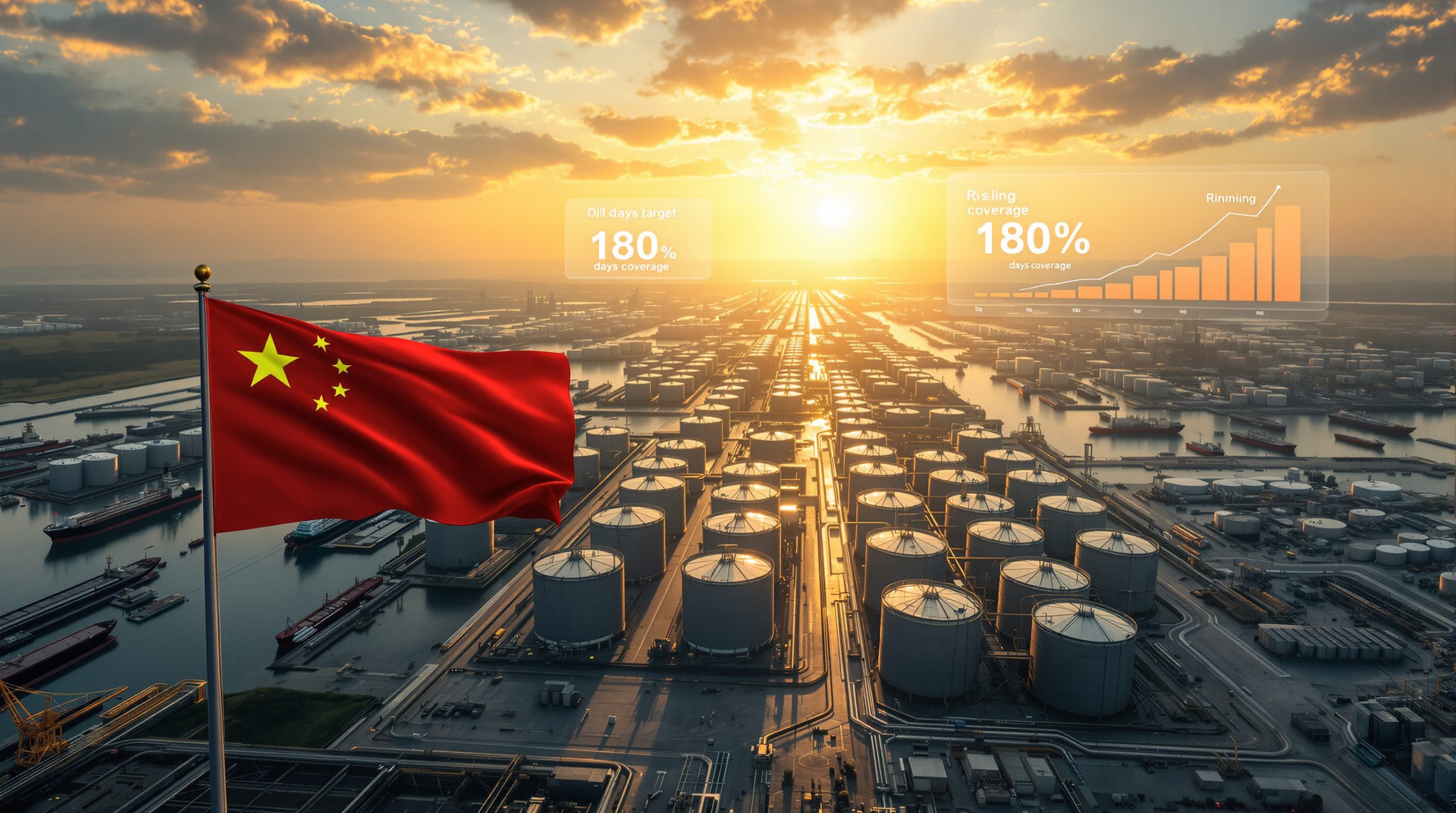The Interdependence Dilemma: Why the Copper Smelter's Future Remains Uncertain
Despite a substantial $600 million financial support package from federal and state governments, Glencore's Mount Isa Copper Smelter faces an uncertain future due to a complex industrial interdependence that threatens operations. The bailout, announced on October 8, 2025, was intended to secure the smelter's operations until at least 2028, but critical supplier relationships now jeopardize this rescue effort.
The crux of the problem lies in the interdependence between the copper smelter and Dyno Nobel's Phosphate Hill fertiliser plant. Without a buyer by March 2026, the fertiliser facility faces closure in September 2026, potentially undermining the entire purpose of the government bailout.
What's Causing Uncertainty Despite the Government Bailout?
The fundamental issue is a symbiotic relationship between two distinct industrial operations. The Mount Isa Copper Smelter relies on Dyno Nobel's acid plant to process the sulphur dioxide produced during copper refining. This arrangement serves both environmental compliance and economic purposes.
Federal Industry Minister Tim Ayres acknowledged this complex reality, stating there is "an interdependence between these facilities" that presents challenges beyond the scope of the current financial support package. This interdependence creates a scenario where the shutdown of one facility inevitably affects the other.
The 140-kilometer distance between Mount Isa and the Phosphate Hill facility belies their operational inseparability. Despite being physically distant, these facilities function as an integrated industrial ecosystem, with the smelter's emissions becoming a critical input for fertilizer production.
How Are the Smelter and Fertiliser Plant Connected?
The industrial symbiosis between these facilities represents a textbook example of circular economy principles in action. The copper smelting process generates significant sulphur dioxide emissions that must be managed to meet environmental regulations. Rather than treating these emissions as waste, the current arrangement converts them into valuable inputs.
Dyno Nobel's acid plant captures and processes the sulphur dioxide from the smelter, transforming it into sulfuric acid. This acid then becomes a crucial ingredient in the production of phosphate fertilizers at Phosphate Hill.
This arrangement delivers three key benefits:
- Environmental compliance: The smelter can operate within regulatory emission limits
- Resource efficiency: Waste products from one process become inputs for another
- Economic viability: Both operations benefit from reduced costs through shared processes
Without this relationship, the smelter would need to find alternative methods to manage its emissions, potentially at significantly higher costs that could threaten its economic viability despite the government support package.
The Economic Stakes: Jobs and Regional Impact
The potential domino effect of a closure extends far beyond the facilities themselves, threatening the economic foundation of northern Queensland's industrial sector.
How Many Jobs Are at Risk?
The employment impact spans multiple facilities and communities:
- 500 workers at Dyno Nobel's facilities, including the Phosphate Hill plant and acid processing facility
- Approximately 600 direct jobs at the Mount Isa Copper Smelter
- Hundreds more in the Townsville refinery operations
- Thousands of indirect positions throughout regional supply chains, service industries, and support businesses
The combined workforce represents one of the largest industrial employers in northern Queensland, with high-paying, specialized roles that are difficult to replace in regional economies.
Beyond direct employment, these operations support numerous businesses throughout the region, from equipment suppliers and maintenance contractors to transportation services and retail establishments that serve the workforce. This regional economic impact extends far beyond the immediate vicinity of Mount Isa.
What's the Timeline for Potential Closure?
The situation has created a tense countdown with clear deadlines that add pressure to finding solutions:
- March 2026: Final date for Dyno Nobel to secure a buyer for Phosphate Hill
- September 2026: Planned shutdown of Phosphate Hill if no buyer is found
- 2028: End date for the current government support package for the smelter
This timeline creates a paradoxical situation where the smelter has financial backing through 2028, but could face operational challenges well before that date if the Phosphate Hill facility closes in 2026.
Dyno Nobel CEO Mauro Neves emphasized the company has "left no stone unturned" in seeking solutions, including securing economical natural gas supplies and maintaining the metallurgical gas arrangement with the Glencore smelter. Despite these efforts, a viable long-term solution remains elusive.
The Bailout Package: Details and Limitations
The joint federal and state government financial support represents one of Australia's largest industrial bailouts in recent years, highlighting the strategic importance of maintaining domestic copper processing capability.
What Does the $600 Million Support Package Include?
The financial bridging package provides comprehensive support across several key areas:
- Operational funding to maintain production through at least 2028
- Capital allocation for essential infrastructure maintenance and upgrades
- Support extension to the Townsville refinery operations
- Protection measures for regional jobs and supply chains
- Assistance for junior miners who rely on the smelter for processing
Minister Ayres described the package as "a deal that secures the three years" while emphasizing it forms part of "an important national effort" that extends beyond just the smelter itself.
The funding recognizes the smelter's role in processing approximately half of Australia's copper, maintaining sovereign capability in a critical mineral essential for renewable energy technologies and infrastructure development.
Why Might the Bailout Package Fall Short?
Despite its substantial size, the support package has significant limitations that could undermine its effectiveness:
- It doesn't resolve the fundamental interdependency with Dyno Nobel's operations
- It provides no mechanism to secure a buyer for the Phosphate Hill facility
- It doesn't address long-term structural challenges in Australia's metals processing sector
- It offers limited solutions to the rising energy costs that affect operational viability
Opposition Leader Susan Ley criticized the package as a "band aid solution" representing a "failure in economic and energy policy." She argued that despite the financial injection, jobs and businesses would "continue to be on the line" without addressing the root causes of the industry's challenges.
The bailout represents significant taxpayer investment without guaranteeing a long-term solution, especially if the interdependency issues cannot be resolved before Dyno Nobel's 2026 deadline. Additionally, this situation reflects broader industry consolidation dynamics affecting the mining sector globally.
The Search for Solutions
With the clock ticking toward Dyno Nobel's March 2026 deadline, stakeholders are exploring multiple pathways to preserve both facilities and the thousands of jobs they support.
What Options Are Being Explored?
Several approaches are currently under investigation:
- Active buyer search: Dyno Nobel is seeking a purchaser for the Phosphate Hill facility
- Transformation study: Glencore is conducting research to identify alternative operational models
- Government facilitation: Officials are engaging with both companies to broker collaborative solutions
- Technical alternatives: Engineers are examining potential restructuring of the industrial processes
- Regulatory flexibility: Authorities are reviewing environmental compliance pathways
Glencore Australia's head of corporate affairs, Cass McCarthy, expressed cautious optimism about finding a solution, noting that the company's transformation study "may identify other options" beyond the current arrangement.
The interdependence challenge requires innovative thinking that could potentially create new industrial synergies or technological approaches that maintain environmental compliance while preserving economic viability. According to Australian Financial Review, the situation reflects broader challenges across Australia's manufacturing sector.
What Has Glencore Said About Alternative Plans?
Glencore representatives have been careful not to make definitive statements about specific alternatives, maintaining an optimistic but measured stance:
- McCarthy stated "I'm optimistic that we'll be able to find a solution" while acknowledging the co-dependency
- The company continues to conduct its transformation study to identify viable alternatives
- No specific technical solutions have been publicly detailed
- The company has committed to continuing operations through the period covered by the government support
The lack of specific alternative plans highlights the technical complexity of the situation and the challenges of reconfiguring industrial processes that were designed with this symbiotic relationship as a core operating principle.
Political Dimensions and Criticism
The situation has ignited political debate about Australia's industrial policy, energy costs, and global competitiveness in minerals processing.
How Have Politicians Responded to the Situation?
The political response reveals divides along party lines and different visions for Australia's industrial future:
- Federal Industry Minister Tim Ayres acknowledged the complex interdependence while defending the government's approach as part of a broader strategy to maintain economic resilience
- Minister Ayres emphasized that "there is more work to do" beyond the initial smelter support
- Opposition leader Susan Ley criticized the bailout as a "band-aid solution" to deeper problems
- Critics argue the situation reflects broader failures in economic and energy policy
- Local representatives have called for additional measures to protect regional jobs
The political stakes are high, with the success or failure of the bailout likely to become a touchstone in debates about government intervention in industry and Australia's approach to maintaining sovereign manufacturing capabilities.
What Are the National Strategic Considerations?
Beyond the immediate economic impact, the situation raises important questions about Australia's industrial strategy:
- Critical minerals processing: Maintaining domestic copper processing capability amid global competition
- Agricultural supply chains: Securing fertilizer production for food security and export agriculture
- Regional development: Preserving economic activity in northern Queensland
- Sovereign capability: Reducing dependence on overseas processing of Australian resources
- Carbon emissions: Balancing environmental regulations with industrial viability
Minister Ayres highlighted the fertiliser operations as vital to "economic resilience," indicating the government views these facilities as strategically significant beyond their immediate economic footprint.
The situation exemplifies broader challenges in maintaining value-adding industrial processing in Australia rather than simply exporting raw materials for processing elsewhere. This reflects ongoing industry evolution trends in the mining sector.
Future Outlook and Implications
The next 18 months will be critical in determining whether the government's substantial investment achieves its intended purpose or becomes a temporary measure preceding inevitable closure.
What Happens If No Buyer Is Found for Phosphate Hill?
If Dyno Nobel cannot secure a buyer by March 2026, a cascade of consequences would likely follow:
- The fertiliser plant would cease operations in September 2026 as announced
- The acid plant that processes the smelter's sulphur would likely close simultaneously
- The copper smelter would face immediate challenges managing emissions to meet regulatory requirements
- The $600 million bailout might not achieve its intended purpose of maintaining operations through 2028
- Alternative arrangements would need to be rapidly developed and implemented
- Thousands of direct and indirect jobs would be at risk across northern Queensland
Without the acid plant to process its emissions, the smelter would need to find alternative compliance methods or face regulatory barriers to continued operation, potentially rendering the government support ineffective.
What Are the Broader Industry Implications?
The Mount Isa situation reflects wider challenges facing Australia's metals processing sector:
- Diminishing processing capacity: Australia increasingly exports raw materials rather than processed products
- Vulnerability of industrial ecosystems: Interdependent facilities face cascading risks
- Energy cost pressures: High energy prices undermine competitiveness in energy-intensive industries
- Remote location challenges: Maintaining complex industrial operations in isolated regions
- Global competition: Australia faces increasing competition from lower-cost processing centers
The outcome of this situation could signal whether Australia can maintain downstream processing capability in strategic minerals or will continue the trend toward becoming primarily a supplier of raw materials to overseas processors. The situation mirrors issues seen in the recent Glencore smelter shutdown in Chile, pointing to a global pattern.
FAQ: Mount Isa Copper Smelter Crisis
Why is the Mount Isa Copper Smelter important to Australia?
The smelter processes approximately half of Australia's copper and represents one of the country's last remaining copper processing facilities. Its operation maintains sovereign capability in minerals processing, supports thousands of regional jobs, and adds value to Australian resources rather than exporting them as raw materials. The facility also plays a crucial role in supplying refined copper for Australia's growing renewable energy sector.
What makes the relationship between the smelter and fertiliser plant so critical?
The relationship exemplifies industrial symbiosis. The copper smelter produces sulphur dioxide as a byproduct, which must be managed to meet environmental regulations. This sulphur dioxide is processed at Dyno Nobel's acid plant, reducing emissions while providing essential inputs for fertiliser production at Phosphate Hill. Without this arrangement, the smelter would need alternative emission management solutions that could be prohibitively expensive.
Could the government extend support to Dyno Nobel's operations?
While not currently announced, Industry Minister Tim Ayres has indicated that the government recognizes the interdependence between facilities and that "more work" is needed beyond securing the smelter. This suggests potential for broader intervention. The strategic importance of both copper processing and fertilizer production could justify additional government support to maintain the industrial ecosystem.
What happens to Australia's copper industry if the smelter closes?
Closure would accelerate Australia's transition toward becoming primarily an exporter of raw materials rather than processed products. More copper concentrate would be shipped overseas for processing, reducing domestic value-adding capabilities and increasing reliance on international supply chains. This would affect Australia's industrial sovereignty, particularly as copper demand increases with renewable energy expansion and electrification, and could significantly impact the global copper supply forecast.
Further Reading:
The complexities facing Australia's metals processing sector extend beyond Mount Isa. The ABC News article "The unspoken reason why the metals industry is being bailed out" offers additional perspectives on the structural challenges affecting Australia's industrial competitiveness and the strategic considerations behind government intervention in critical industries.
The Mount Isa situation illustrates a broader dilemma for Australia's resources sector: maintaining the economic and environmental viability of value-adding processing in an era of global competition, rising energy costs, and increasing environmental standards. The outcome will significantly influence Australia's future role in global mineral supply chains.
Want to Discover the Next Major Mineral Opportunity Before the Market?
Discovery Alert's proprietary Discovery IQ model delivers instant notifications on significant ASX mineral discoveries, turning complex data into actionable investment insights. Understand why major mineral discoveries can lead to substantial returns by exploring Discovery Alert's dedicated discoveries page and position yourself ahead of the market.




